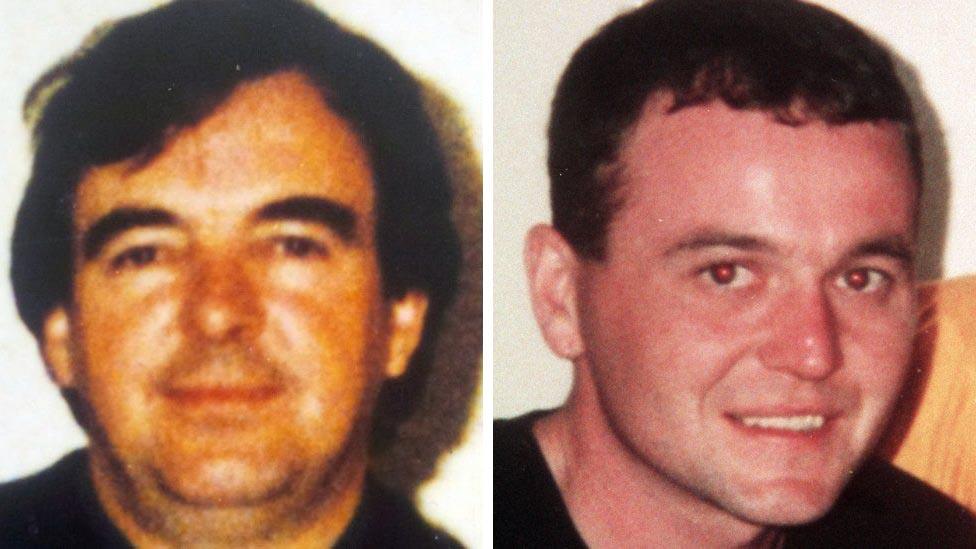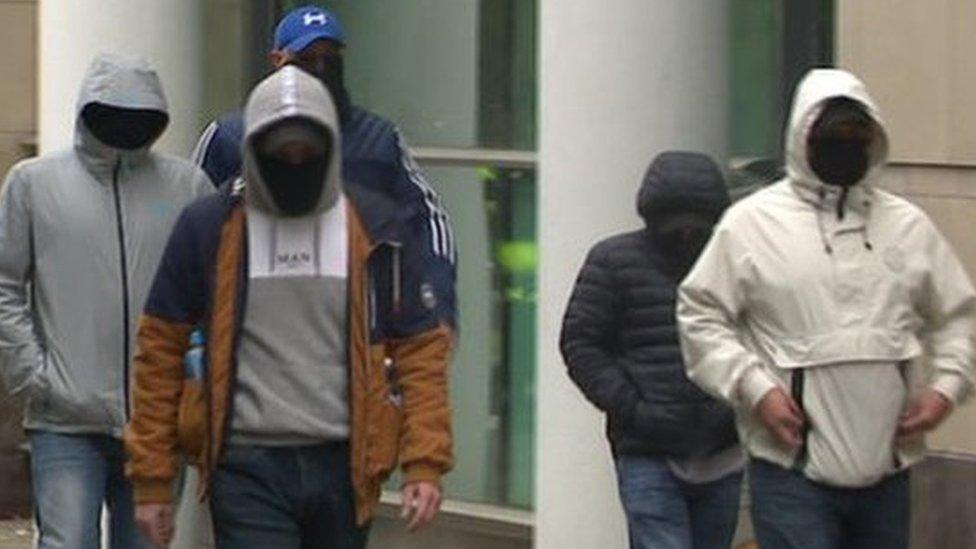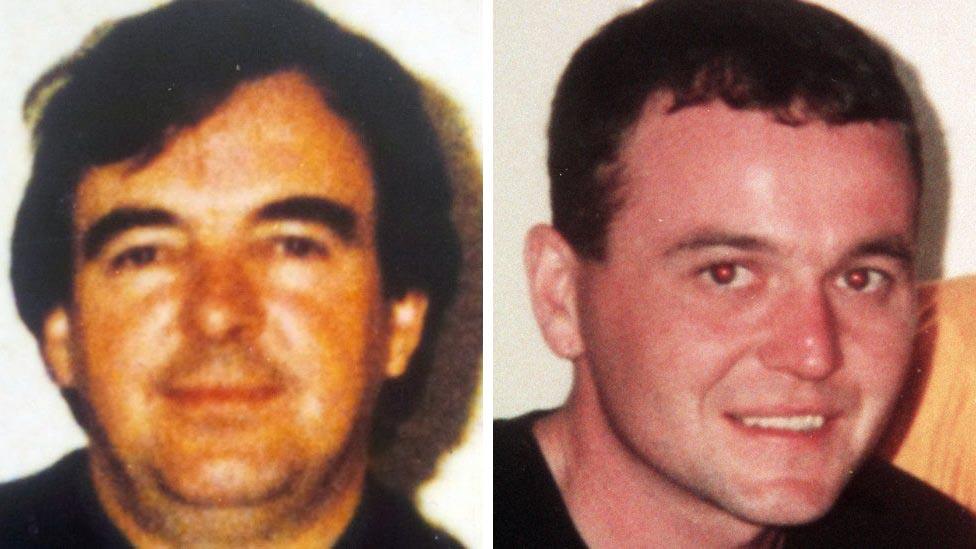Troubles: Case against 1994 murder accused deeply flawed, court hears
- Published

Two Catholic men, Eamon Fox and Gary Convie, were shot dead in a car in Belfast's North Queen Street in May 1994
The prosecution case against a man accused of murdering two Catholic men in 1994 is deeply flawed and weak, a court has been told.
Lawyers representing James Stewart Smyth, 57, were addressing the court on Tuesday.
He denies killing Eamon Fox, a 41-year-old father-of-six, and Gary Convie, a 24-year-old father-of-one.
They two workmen were shot dead as they ate their lunch in a car at a Belfast building site in May 1994.
A third man, known as Witness A, survived the attack - Mr Smyth also denies his attempted murder, as well as possession a Sten sub machine gun and a quantity of ammunition with intent, and of being a member of the Ulster Volunteer Force (UVF).

Supergrass Gary Haggarty previously identified James Stewart Smyth as the gunman
The non-jury trial, which commenced in October, has already heard Mr Smyth's DNA was located from the inside collar of a Barbour jacket, located in a bag alongside the murder weapon in a derelict house close to the murder scene.
Mr Smyth was also identified as the gunman by former UVF chief Gary Haggarty.
The senior loyalist turned supergrass is the main prosecution witness in the case against Mr Smyth.
'Deeply flawed'
Launching a "no case to answer" application, Mr Smyth's barrister described the Crown's case against his client as "deeply flawed".
Michael Borrelli KC suggested Haggarty may have been previously motivated to provide Smyth's name as he was a person of interest to Haggarty's Special Branch handlers.
Another suggestion was Haggarty pointed the finger at Mr Smyth to "go against others" in the UVF.
Describing Haggarty's claim as "not enough", Mr Borrelli told the judge, Mr Justice O'Hara: "If there is no independent supporting evidence that puts him by the fence, we submit My Lord could not be convinced at this stage that you could convict him."
Mr Borelli further argued witnesses had described the gunman as being "tall and skinny" while another said he was "between 5ft 8in and 5ft 10in", whereas Mr Smyth is a "notably short man".
"There is not a single person who says that the gunman was a small man."
Mr Borrelli also addressed the issue of his client's DNA match.
"We do not know when the DNA got there or how it got there... it may provide an association between Mr Smyth and the jacket but it does not provide an association with Mr Smyth and the jacket standing by those railings blasting away with a Sten gun," he said.
'Difficult to be definitive'
Regarding eyewitness reports and the height of the gunman, prosecution barrister Kieran Murphy KC spoke of "multiple descriptions" given from "different angles".
He said it was "difficult to be definitive" given this was a quick and "traumatic" incident.
The senior prosecutor also raised the issue of the presence of Mr Smyth's DNA.
"This was the jacket associated directly with the gun and it was the jacket worn by the gunman," he said.
"Haggarty's account is that Smyth was given that jacket which didn't fit him... and that the jacket was rolled up with the gun and put in the bag with the gloves and the hat - that was the gunman's toolkit - and was left in a derelict house after."
Mr Murphy said the account given by Haggarty regarding the May 1994 murders and other terrorist offences committed by Haggarty and his UVF associates were consistent.
This was in contrast to Mr Smyth who has "denied involvement but has said nothing else", he said.
After listening to submissions from both senior barristers, Mr Justice O'Hara said he wanted time to reflect.
He said he would give a ruling on the "no case to answer" application on 9 January.
Related topics
- Published26 October 2023

- Published23 October 2023

- Published25 October 2023

- Published26 October 2023
